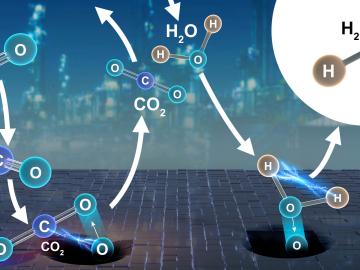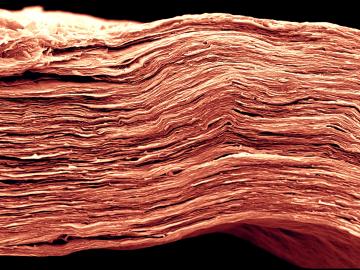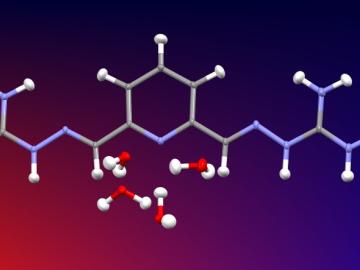
Filter News
Area of Research
- (-) Materials (64)
- Advanced Manufacturing (5)
- Biological Systems (1)
- Biology and Environment (33)
- Computational Biology (1)
- Computational Engineering (2)
- Computer Science (7)
- Energy Science (106)
- Energy Sciences (1)
- Fusion and Fission (5)
- Isotopes (4)
- Materials for Computing (9)
- National Security (14)
- Neutron Science (68)
- Nuclear Science and Technology (6)
- Sensors and Controls (1)
- Supercomputing (35)
- Transportation Systems (2)
News Type
News Topics
- (-) Artificial Intelligence (4)
- (-) Bioenergy (9)
- (-) Biomedical (5)
- (-) Composites (7)
- (-) Energy Storage (26)
- (-) Machine Learning (2)
- (-) Neutron Science (22)
- (-) Security (1)
- (-) Transportation (10)
- 3-D Printing/Advanced Manufacturing (19)
- Advanced Reactors (2)
- Biology (4)
- Buildings (3)
- Chemical Sciences (24)
- Clean Water (1)
- Computer Science (9)
- Coronavirus (3)
- Critical Materials (13)
- Cybersecurity (3)
- Environment (8)
- Exascale Computing (1)
- Frontier (2)
- Fusion (4)
- Grid (2)
- High-Performance Computing (2)
- Isotopes (7)
- ITER (1)
- Materials (50)
- Materials Science (54)
- Microscopy (18)
- Molten Salt (3)
- Nanotechnology (29)
- National Security (3)
- Nuclear Energy (5)
- Partnerships (8)
- Physics (16)
- Polymers (12)
- Quantum Computing (2)
- Quantum Science (11)
- Space Exploration (1)
- Summit (1)
Media Contacts

Collaborators at the Department of Energy’s Oak Ridge National Laboratory and U.S. universities used neutron scattering and other advanced characterization techniques to study how a prominent catalyst enables the “water-gas shift” reaction to purify and generate hydrogen at industrial scale.

A team of researchers at Oak Ridge National Laboratory have demonstrated that designed synthetic polymers can serve as a high-performance binding material for next-generation lithium-ion batteries.

Researchers have pioneered a new technique using pressure to manipulate magnetism in thin film materials used to enhance performance in electronic devices.

Scientists have discovered a way to alter heat transport in thermoelectric materials, a finding that may ultimately improve energy efficiency as the materials


OAK RIDGE, Tenn., March 1, 2019—ReactWell, LLC, has licensed a novel waste-to-fuel technology from the Department of Energy’s Oak Ridge National Laboratory to improve energy conversion methods for cleaner, more efficient oil and gas, chemical and

Researchers used neutron scattering at Oak Ridge National Laboratory’s Spallation Neutron Source to investigate the effectiveness of a novel crystallization method to capture carbon dioxide directly from the air.

Oak Ridge National Laboratory scientists studying fuel cells as a potential alternative to internal combustion engines used sophisticated electron microscopy to investigate the benefits of replacing high-cost platinum with a lower cost, carbon-nitrogen-manganese-based catalyst.

A team of scientists has for the first time measured the elusive weak interaction between protons and neutrons in the nucleus of an atom. They had chosen the simplest nucleus consisting of one neutron and one proton for the study.

Scientists at the Department of Energy’s Oak Ridge National Laboratory have created a recipe for a renewable 3D printing feedstock that could spur a profitable new use for an intractable biorefinery byproduct: lignin.


